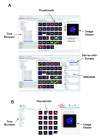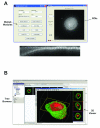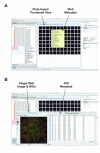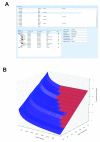OMERO: flexible, model-driven data management for experimental biology
- PMID: 22373911
- PMCID: PMC3437820
- DOI: 10.1038/nmeth.1896
OMERO: flexible, model-driven data management for experimental biology
Abstract
Data-intensive research depends on tools that manage multidimensional, heterogeneous datasets. We built OME Remote Objects (OMERO), a software platform that enables access to and use of a wide range of biological data. OMERO uses a server-based middleware application to provide a unified interface for images, matrices and tables. OMERO's design and flexibility have enabled its use for light-microscopy, high-content-screening, electron-microscopy and even non-image-genotype data. OMERO is open-source software, available at http://openmicroscopy.org/.
Figures





References
Publication types
MeSH terms
Grants and funding
- BB/I000755/BB_/Biotechnology and Biological Sciences Research Council/United Kingdom
- BB/I000755/1/BB_/Biotechnology and Biological Sciences Research Council/United Kingdom
- BB/I001662/1/BB_/Biotechnology and Biological Sciences Research Council/United Kingdom
- BB/G022577/1/BB_/Biotechnology and Biological Sciences Research Council/United Kingdom
- 085982/WT_/Wellcome Trust/United Kingdom
LinkOut - more resources
Full Text Sources
Other Literature Sources

